Some of the links in this post may be affiliate links.
Do you want to learn how to conduct Sansevieria propagation? In this post, I outline 5 different ways that you can conduct Sansevieria propagation.
I’ll also discuss the pros and cons of each method, and include helpful tips so that you can be successful with whatever method you do choose!
Sansevieria is actually now reclassified into the Dracaena genus, and there is no shortage of common names either: snake plant and mother in law’s tongue are the most common, but it is also called bowstring hemp plant and devil’s tongue.
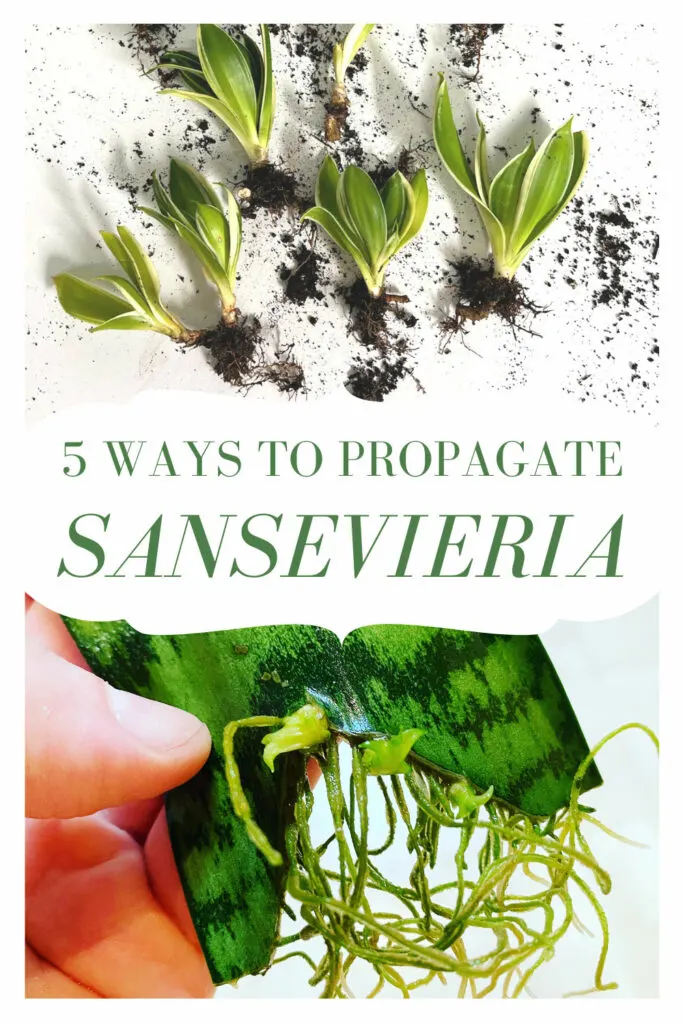
With some of these sansevieria propagation methods I’m about to show you (the two leaf cutting methods), I’ve written additional detailed posts showing every single step with plenty of instructions and photos.
Refer to the “related snake plant content” at the end of this post for even more details.
Table of Contents
5 METHODS OF SANSEVIERIA PROPAGATION
1. Crown Division of an Existing Plant
For this method, simply take your plant out of its pot and you’ll simply divide the plant at its roots into any many sections as you want, and then pot them all up separately.
In the photo below, this represents a plant that I’ve had for almost 20 years. I watered the plant, and then took it out of its pot a few hours later.
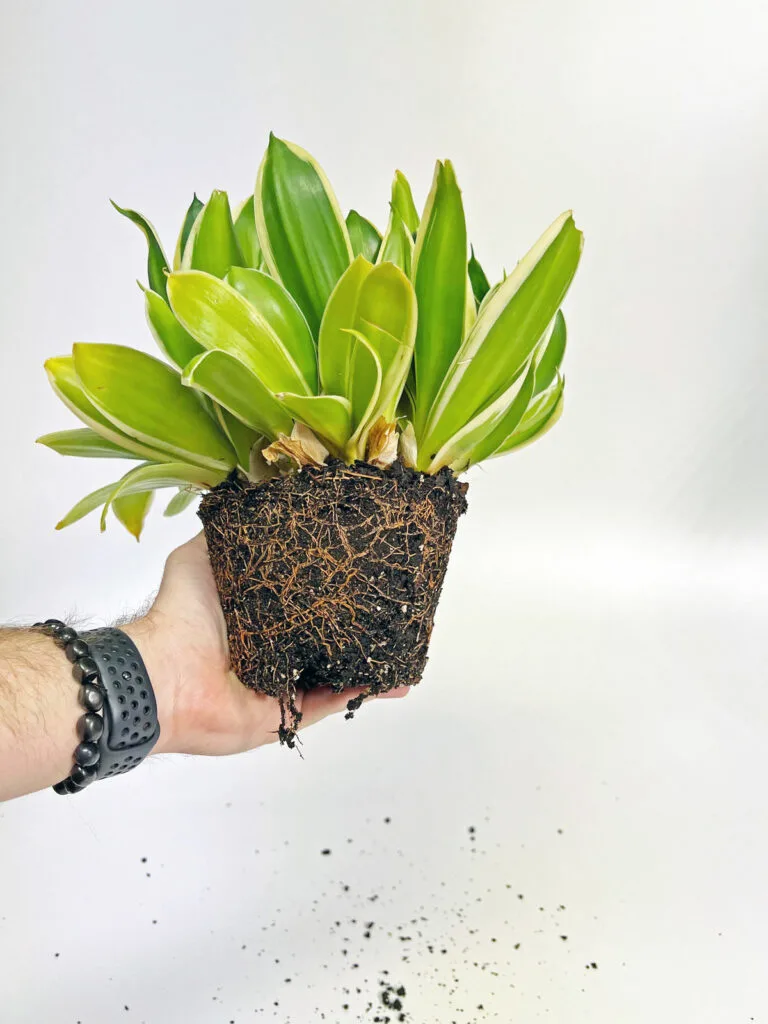
Next, I simply used my two bare hands to pry the root ball apart (see the next photo below).
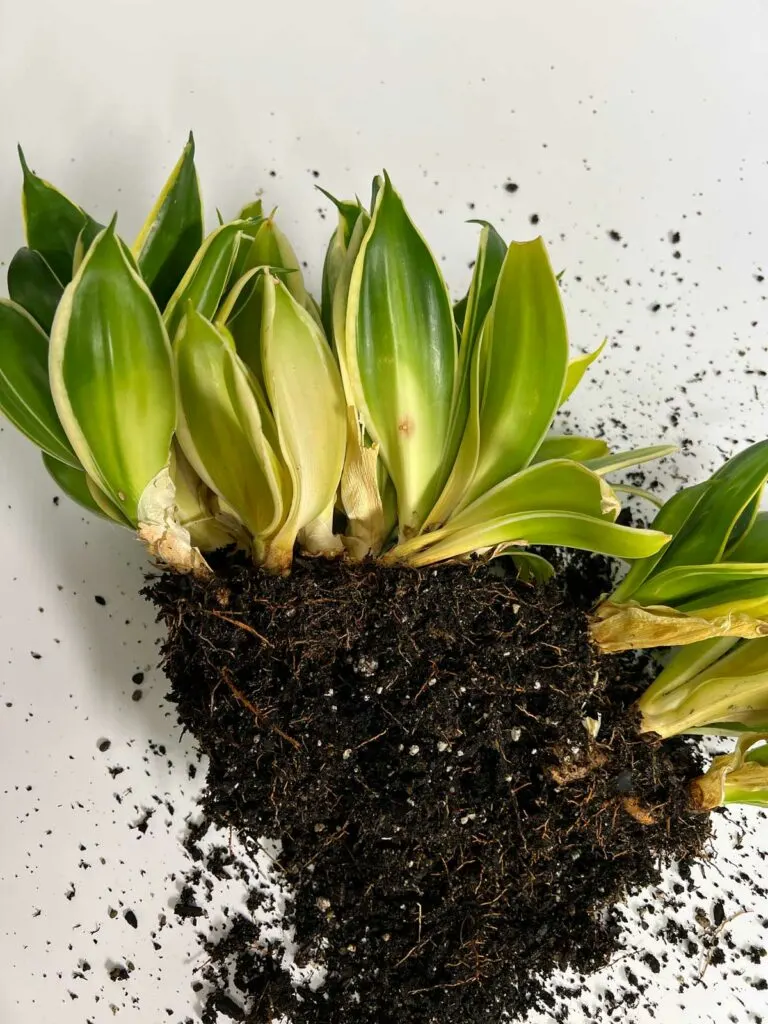
Notice that the center of the plant is yellowish and suffered. This was because the plant was so dense that the inner growth was being choked out and was not receiving enough light.
Next, I kept going and used my hands to tease apart more divisions. You can keep them with single crowns, or you can keep 2 or more still attached to each other. There is no right or wrong.
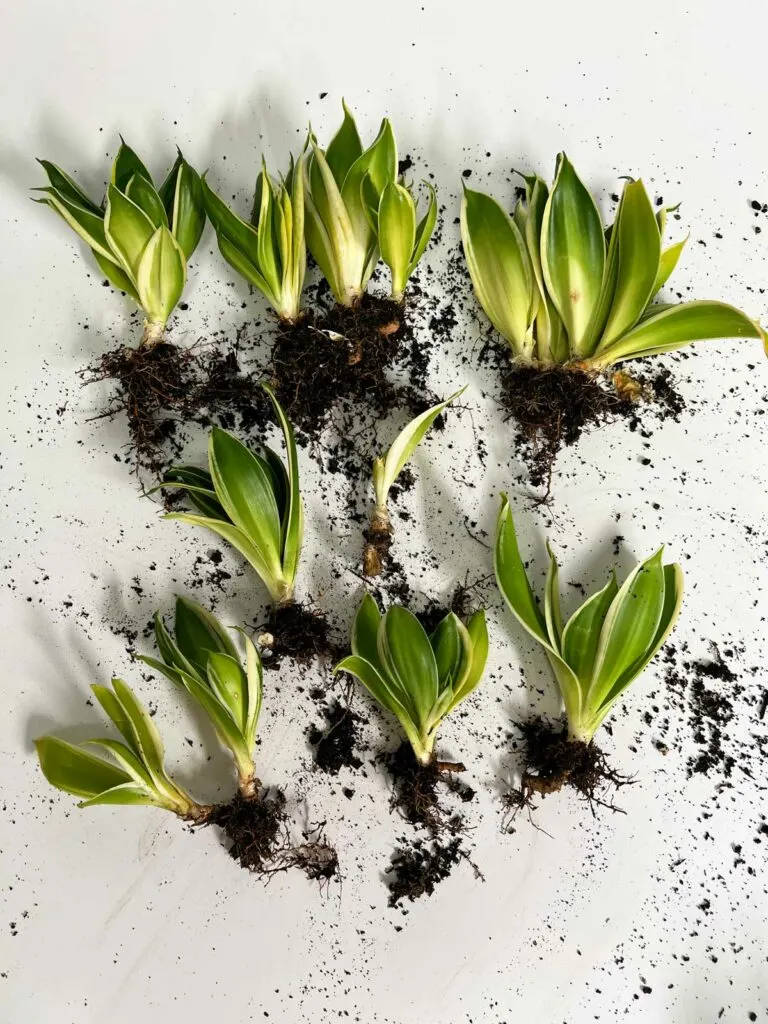
In the photo below, you can see a single crown, complete with the rhizome and roots. The rhizome is simply an underground stem. Snake plants send out rhizomes in the soil, and then pups will emerge from them.
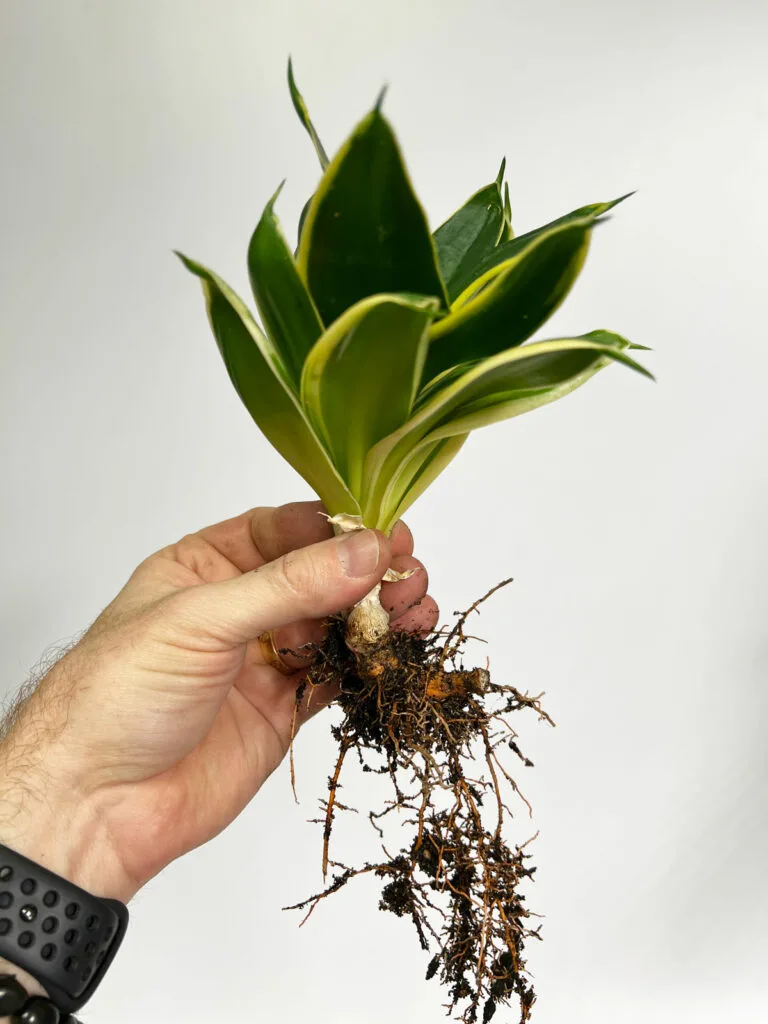
Try and get as many roots as you can, but snake plants are extremely resilient. I’ve even planted divisions with just leaves and a rhizome, but no roots. Plant them and they will grow!
Next, I simply planted each division into separate pots. For the potting mix, I used 2 parts of Miracle-Gro Cactus, Palm & Citrus Mix and 1 part of 1/4″ pumice for aeration and drainage.
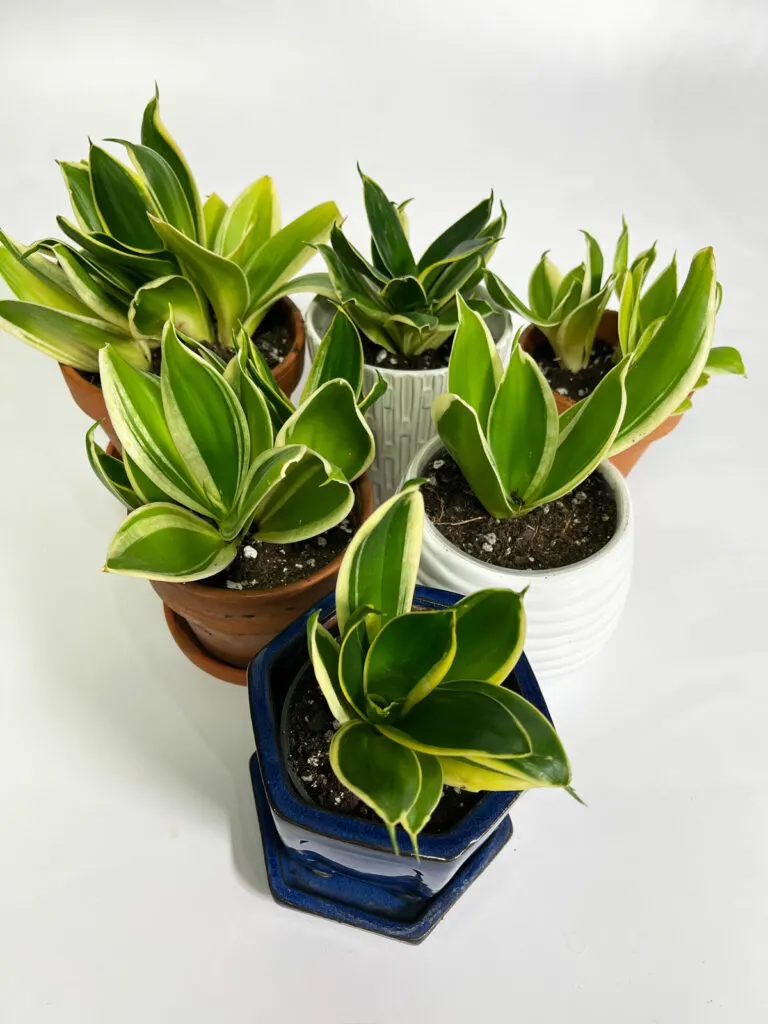
Avoid pots that are too big when you are potting up your divisions. It is better to stay on the smaller end of pot size.
If you use pots that are too big, the excess volume of soil will take much longer to dry out and these plants like to dry out fairly quickly.
Start out with a smaller pot, and once your divisions start grow and become pot bound, you can repot again after that point and give your plant a bigger pot if you desire.
PROS:
The next two methods that I will discuss won’t always result in pups that are the same as the parent plant. The division method that I just showed you will. If you want a variegated plant to stay variegated and result in exactly the same variety, division is a great option.
You instantly get new plants when you divide them. There is no waiting period!
CONS:
You need a plant with multiple crowns or growths to be able to divide it, otherwise you have to wait.
The following tips will apply to both of the next two methods: Leaf Cuttings in Water and Leaf Cuttings in Soil:
Select a leaf or leaves to propagate. Each leaf can be left as-is, or you can cut each leaf into multiple segments. Each segment will grow roots and pups! Make sure you select a mature, healthy leaf, and not one that is tired and old.
If you cut each leaf into multiple segments, make sure that you don’t turn the leaf segments upside down. They need to stay in the same orientation as they were when they were growing on the plant. If you turn them upside down, they will not grow.
After you make your cuttings, allow the cuts to dry and callous over. This will help prevent your cuttings from rotting. Let them air dry at least 1-2 days, but it could be longer. The cut end should feel completely dry before you proceed.
Propagation by leaf cuttings is very slow. Warm temperatures can greatly speed up the time that it takes for rooting and pups to grow. Using an inexpensive propagation heating mat to set your propagations on will speed things up significantly.
Variegated snake plants (with leaf edges/margins that are a contrasting color or that have stripes within the leaf) will normally NOT come true from leaf cuttings. These varieties will normally revert to the plain green version with leaf cuttings.
Here is a reference table below that tells you which varieties will come true from leaf cuttings and which will not. (Source: University of Florida Institute of Food and Agricultural Sciences)
| Snake Plant | Will it come true from leaf cuttings? | Comments |
| Dracaena cylindrica | YES | |
| Dracaena parva | YES | |
| Dracaena trifasciata | YES | |
| Dracaena trifasciata ‘Futura’ | NO | Normally reverts to ‘Robusta’ |
| Dracaena trifasciata ‘Golden Hahnii’ | NO | Normally reverts to ‘Hahnii’ |
| Dracaena trifasciata ‘Robusta’ | YES | |
| Dracaena trifasciata ‘Hahnii’ | YES | |
| Dracaena trifasciata ‘Laurentii’ | NO | Normally reverts to D. trifasciata |
| Dracaena trifasciata ‘Laurentii Compacta’ | NO | |
| Dracaena trifasciata ‘Moonshine’ | NO | Normally reverts to ‘Robusta’ |
| Dracaena trifasciata ‘Nelsonii’ | YES | |
| Dracaena trifasciata ‘Silver-Queen’ | YES | |
| Dracaena trifasciata ‘Silver Hahnii’ | YES |
For the ones that do not come true from leaf cuttings, you can only propagate them using the crown division method (method #1 in this post) or the rhizome cutting method (method #4 in this post).
2. Leaf Cuttings in Water
Make sure that you follow all the tips in the previous section regarding treatment of leaf cuttings.
For water propagation, I like to take an additional step and cut a V shape at the bottom of the cuttings.
I do this so that the cuttings have room to grow roots and they’re not in contact with the bottom of your propagation vessel (and there is more surface area to grow pups!)
After making sure that you’ve let your cuttings air dry for a couple days, like previously described, place the cuttings in water and make sure that the entire V cut is submerged in water.
You don’t HAVE to make the V cut, but I think it helps.
One critical part to help prevent rotting is to change the water frequently, and monitor the cuttings for slime.
Take the cuttings out of water every 2-3 days (this is important early on when you’re starting to propagate in water), and gently clean off any slime that has accumulated on the cuttings.
This is very important to help prevent rotting.
To read my dedicated post on propagating snake plants in water, refer to the “related snake plant content” at the end of this post.
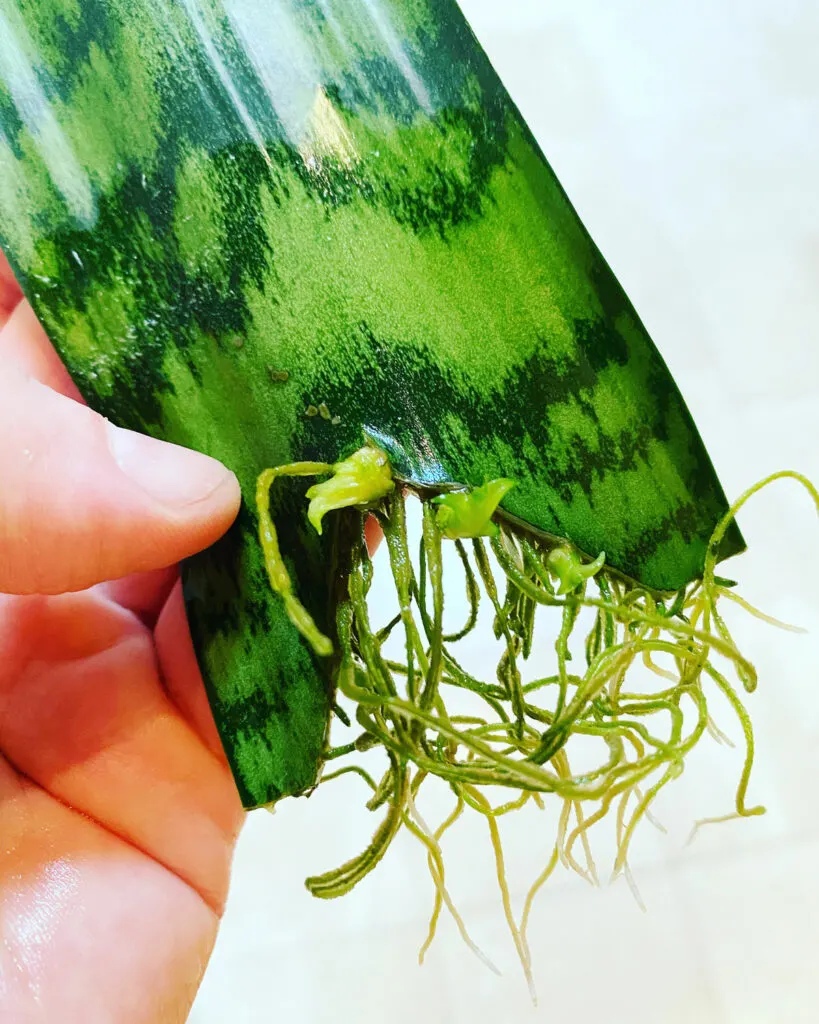
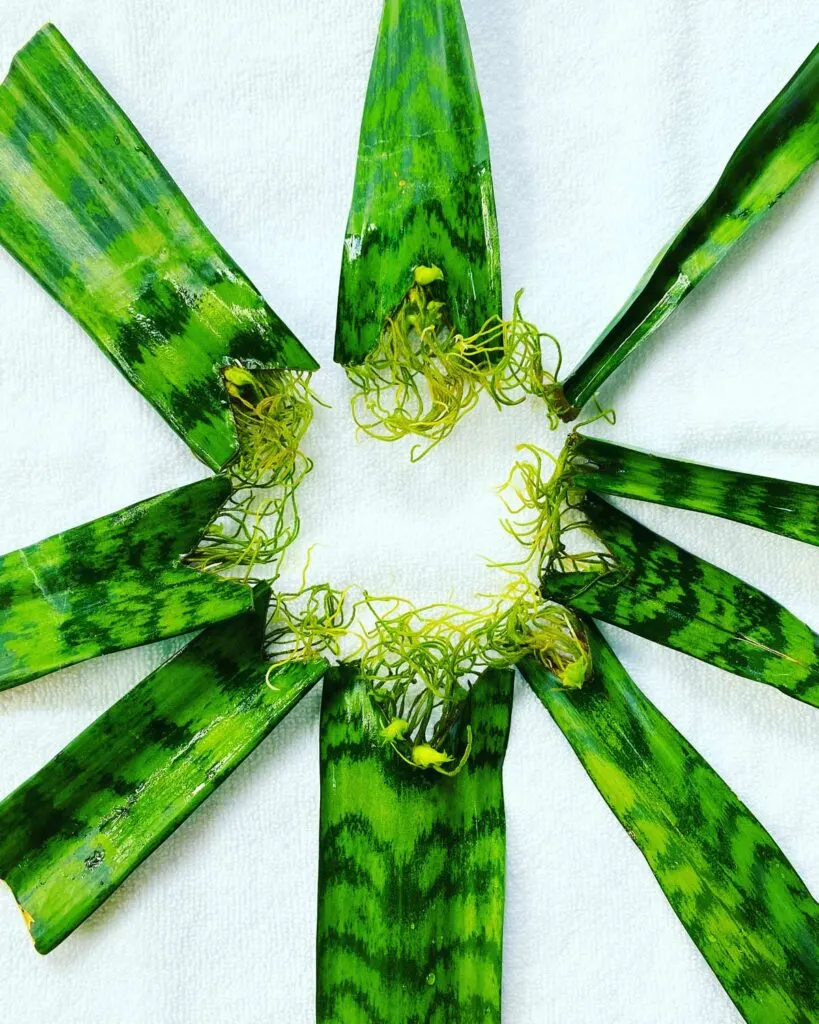
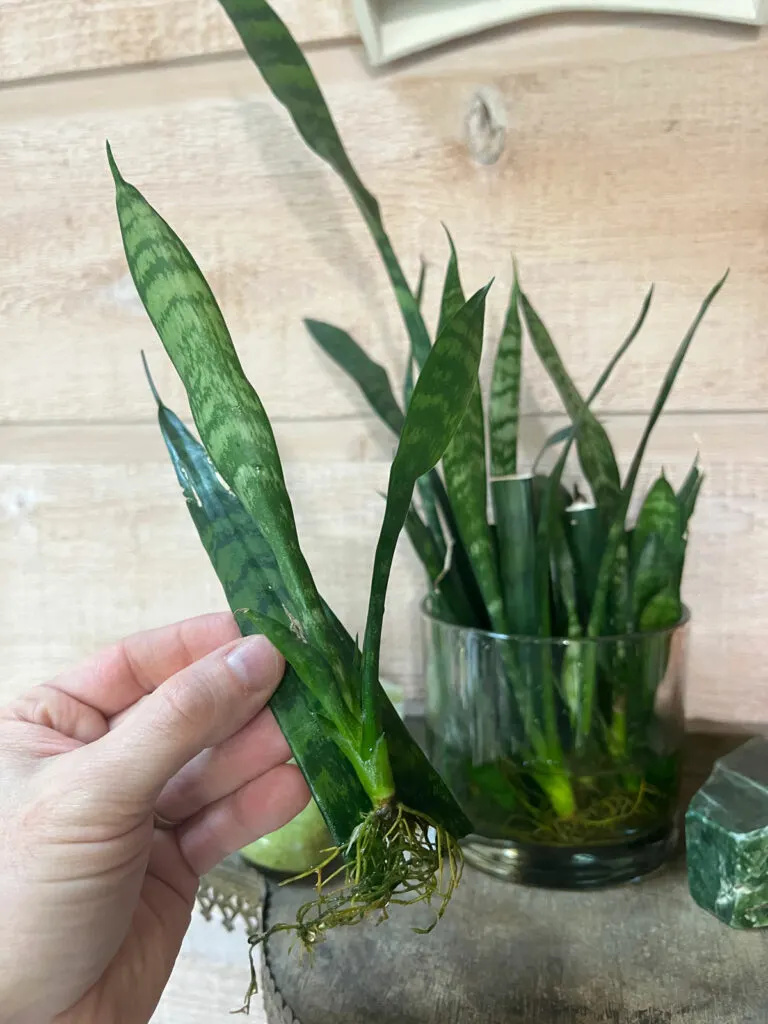
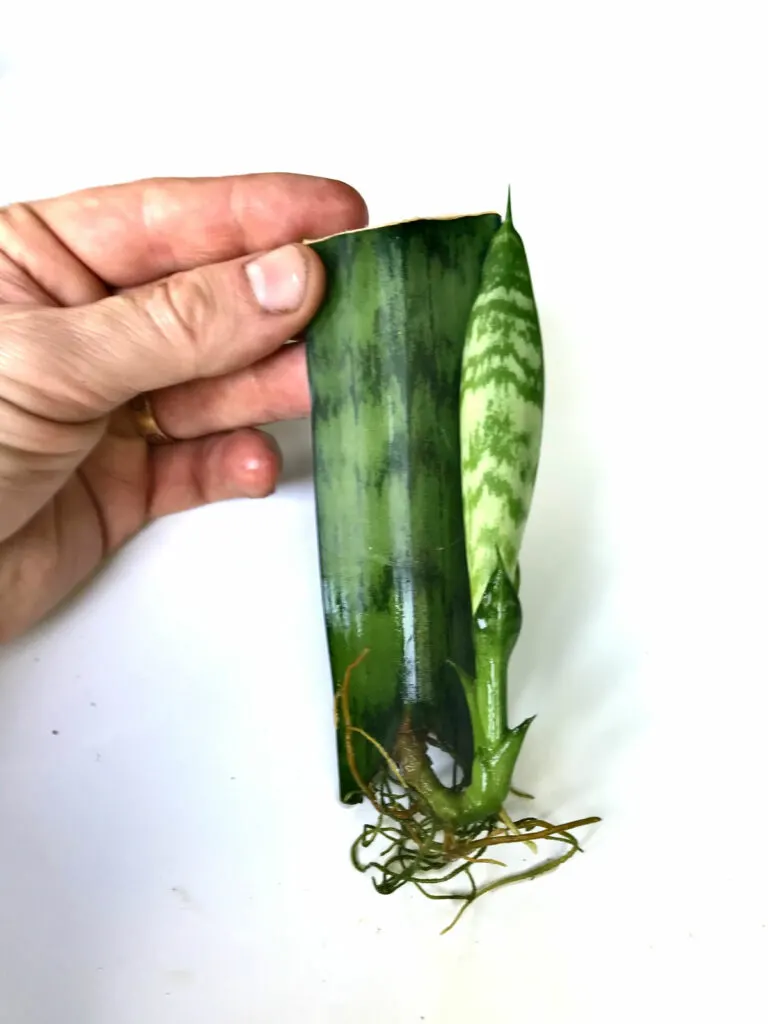
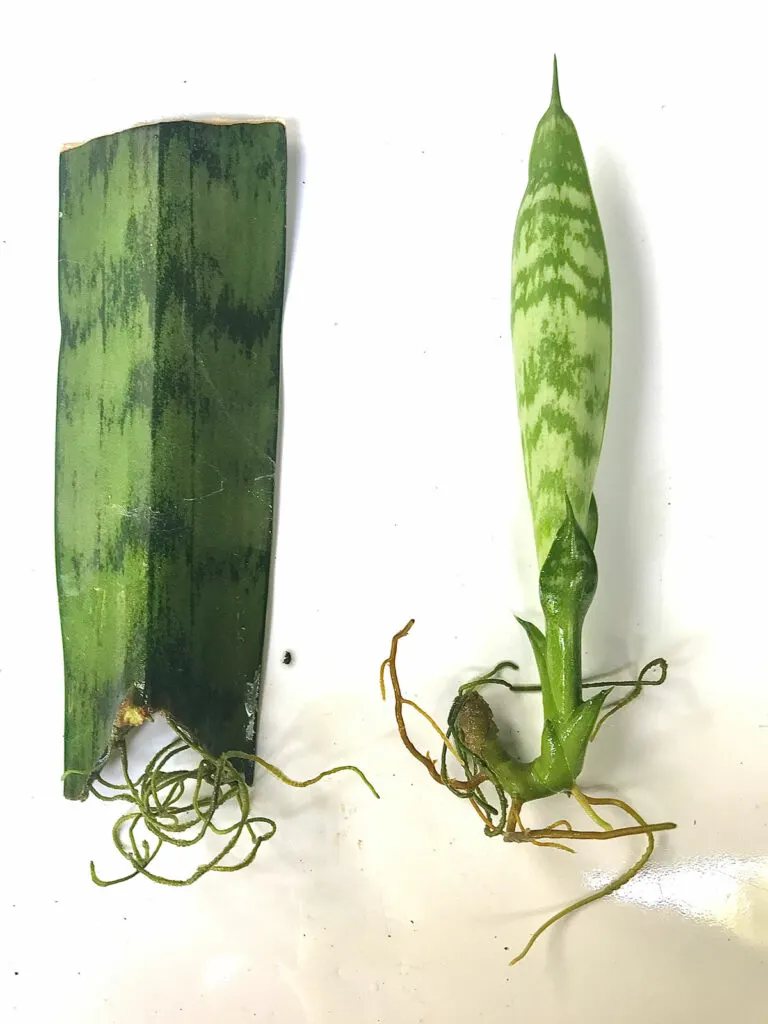
PROS:
With the leaf cutting water propagation method, you don’t have to worry about “watering” per say (just make sure the water level doesn’t dry out!)
It is fun to watch the roots and pups form. You can’t do this with soil propagation unless you unearth them and inspect the progress.
CONS:
At least in the initial stages before your cuttings start to grow roots, you need to change the water frequently to keep it fresh, as well as clean off any slime that develops on the cuttings in order to deter rotting. I would recommend doing this every 2-3 days initially.
After the cuttings start to grow roots, you can probably just change the water out safely every week. The slime should stop forming at that time, or at least dramatically slow don’t so that you don’t have to babysit as much.
Other than growing snake plants from seed, propagation by leaf cuttings (whether by water or soil) is the slowest method and can take months before pups appear.
You can speed up the process by setting your propagation containers on a propagation heating mat. A warmer temperature makes a huge difference to speed up the rate of propagation.
If you enjoy propagating houseplants in water, I recommend that you read through my post on the best houseplants to water propagate.
3. Leaf Cuttings in Soil
Simply take as many leaf cuttings as you want, allow the cut ends to dry and callous over for at least 1-2 days, and insert into a potting mix and water.
I allow about the top inch or so of the potting mix to dry out before watering again. Placing your pot on top of a propagation heating mat will greatly speed up progress.
To read my dedicated post to propagating snake plants in soil, refer to the “related snake plant content” at the end of this post.
Here is a progression from leaf cuttings to a plant.
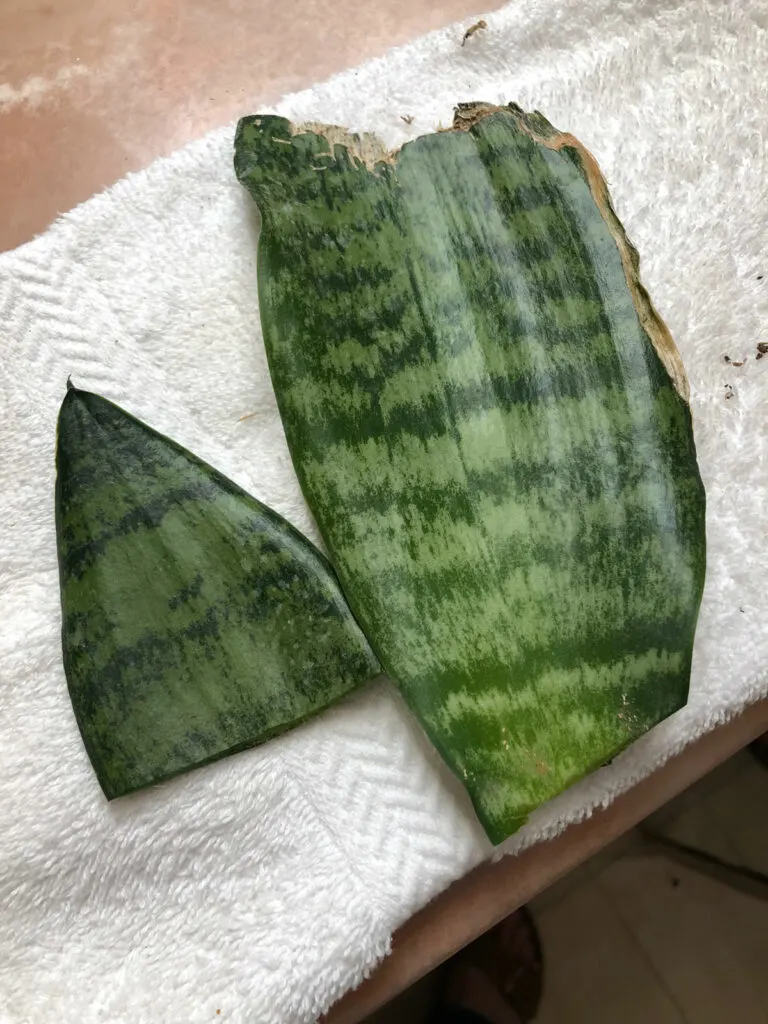
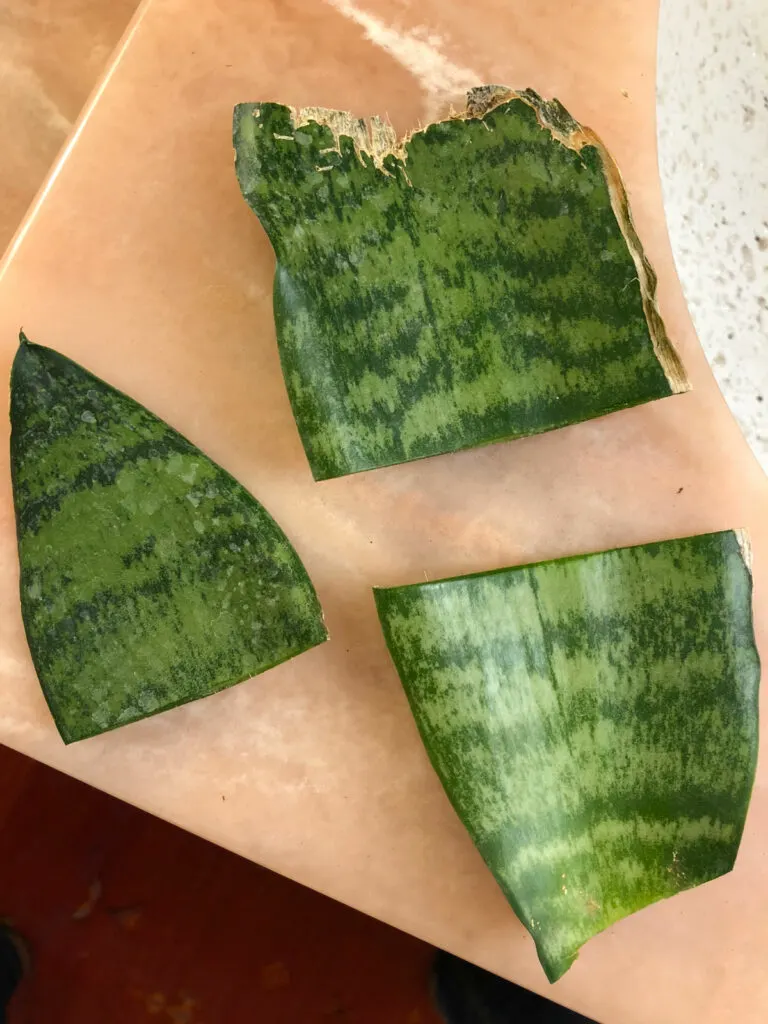
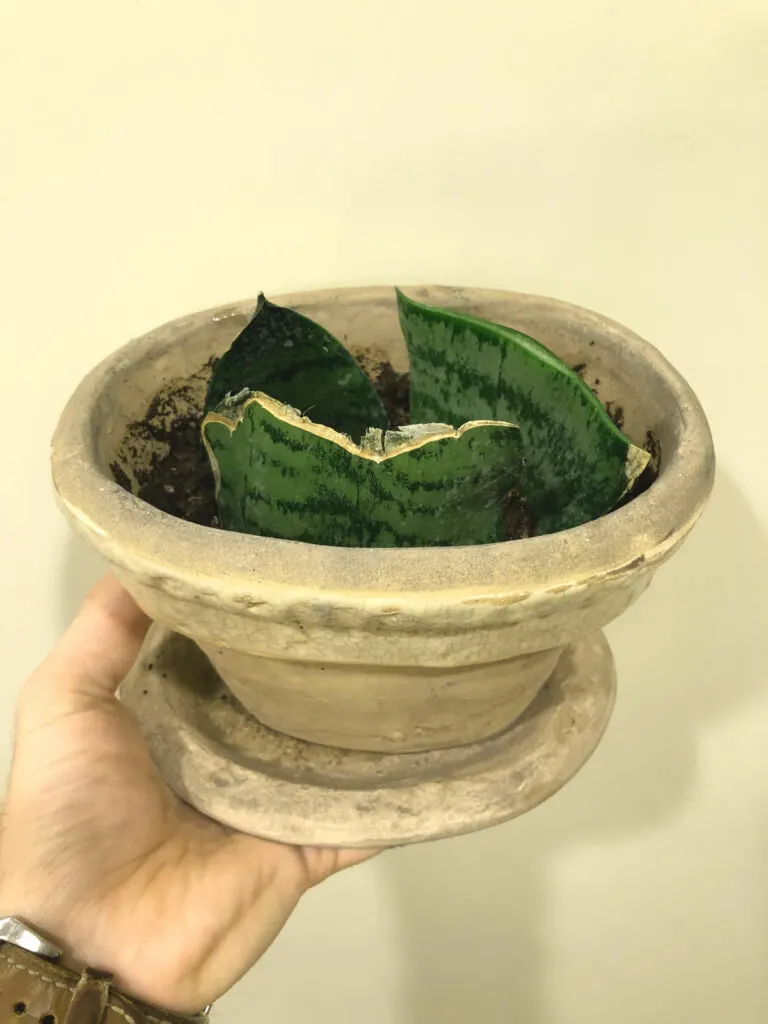
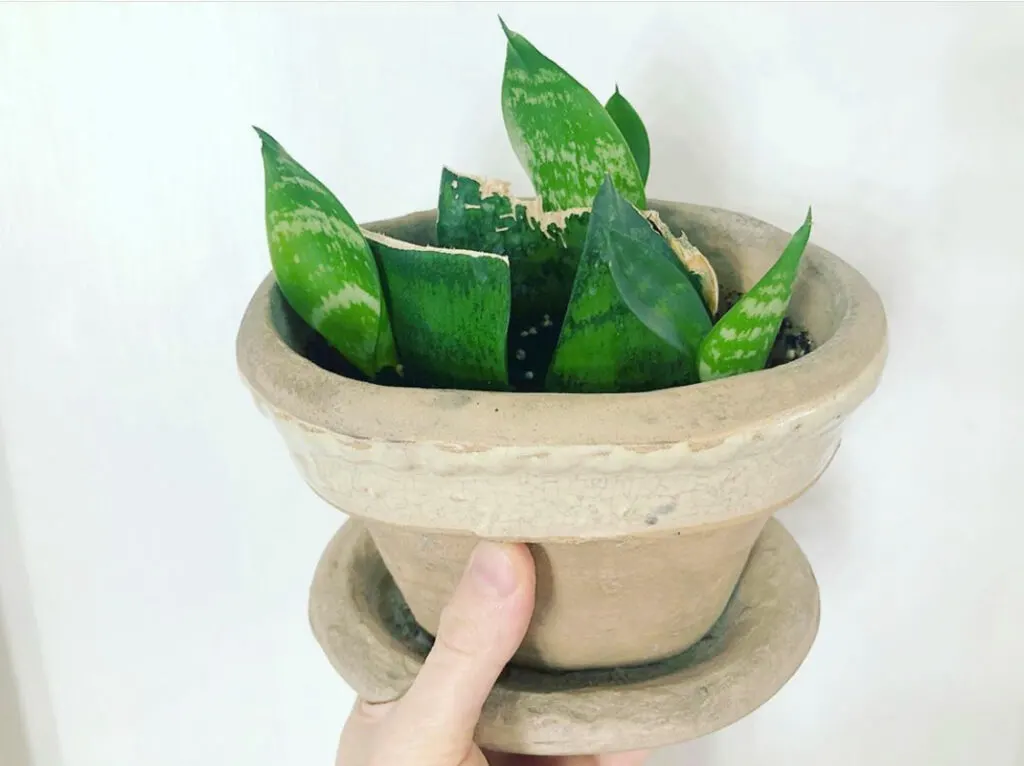
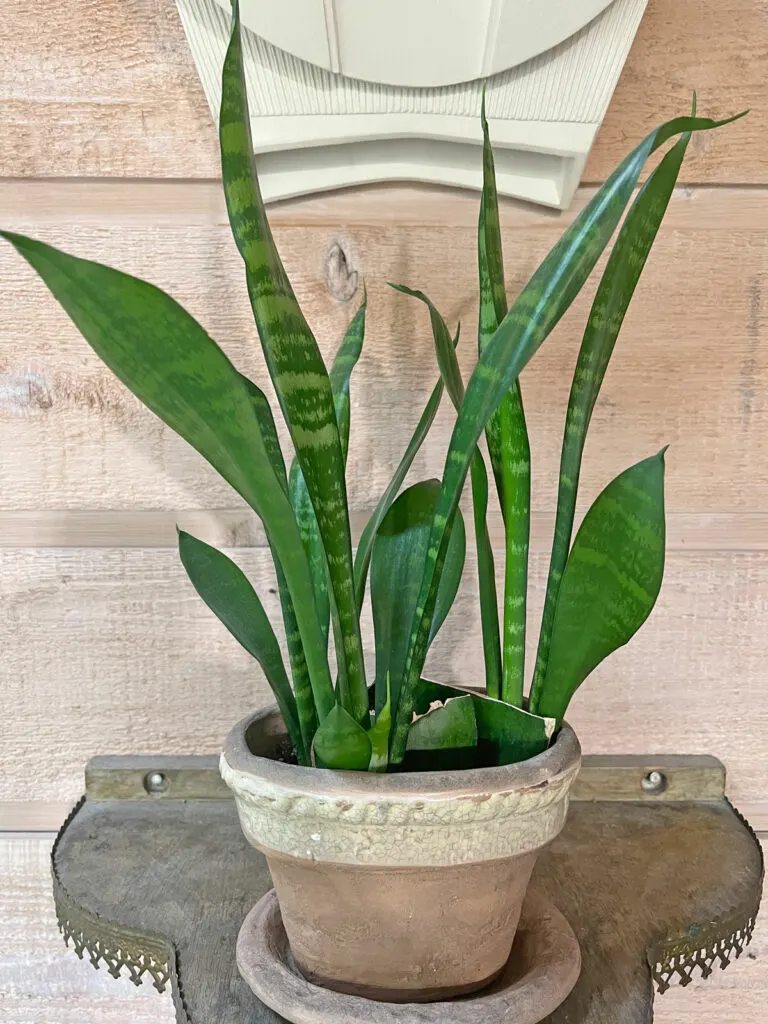
PROS:
For this soil propagation method of leaf cuttings, you don’t have to root them in water first and then transfer to soil. It will save you a step.
CONS:
Many cultivars will not come true from leaf cuttings and will need to be divided (method #1) or use rhizome cuttings (method #4) in order for the resulting plants to look exactly like the parent plant. Refer to the table earlier in this post.
Propagation by leaf cuttings (whether by water or soil) is very slow (especially if you don’t use bottom heat) and can take months before pups appear.
Another con is that you have no indication if roots and pups are starting to form, unless you disturb the cuttings and take them out of the soil to inspect them.
4. Rhizome Cuttings
For this method, you’re simply using a piece of rhizome that has no leaves. Even rhizomes that have no leaves attached will grow plants for you.
You’ll have to take your plant out of its pot. Cut a piece of rhizome (as long as you want).
Or if you’re routinely repotting your plants, and you happen to break a rhizome, use that to propagate!
Next, to be safe, allow the rhizome to air dry for a few days so that the part that you cut will dry and callous over. This will help prevent rotting.
Next, you can do one of two things:
- Place the rhizome on top of moist sphagnum moss, and place in a clear plastic bag. Open up the bag every so often to let it air out to prevent rotting. You should get new plants growing along the rhizome.
- You can also take your rhizome(s) and simply bury them in soil and wait. The downside is that you can’t see any progress (or failures) this way.
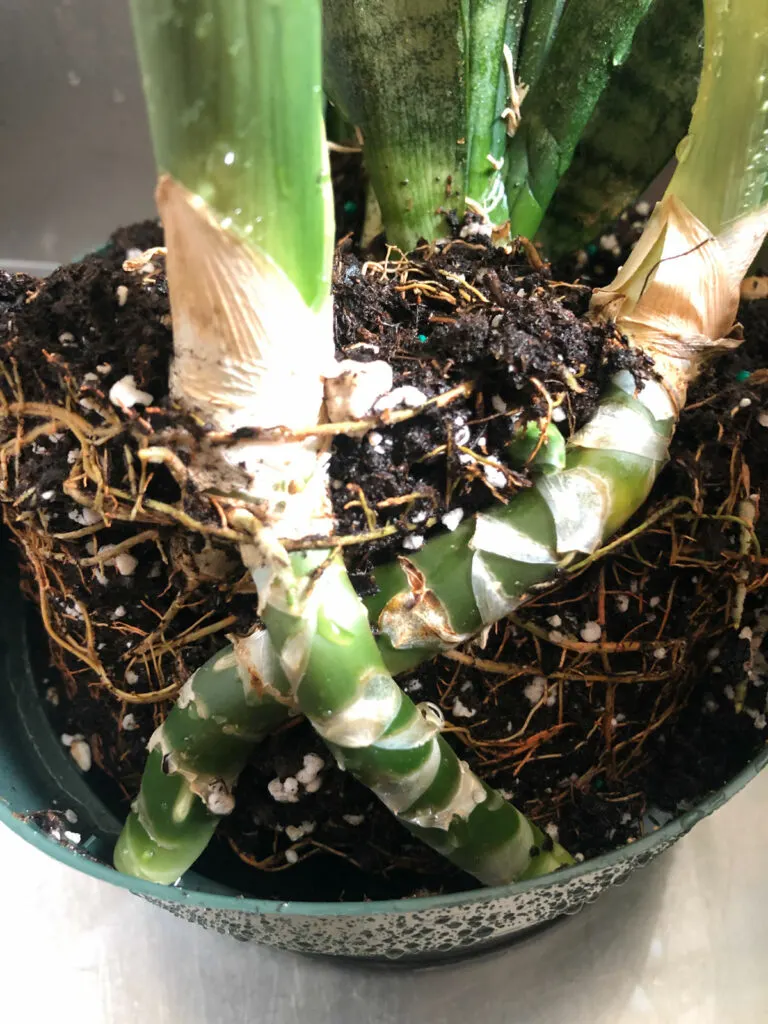
Here is a small piece of rhizome that I broke apart from when I divided my plant (method #1).
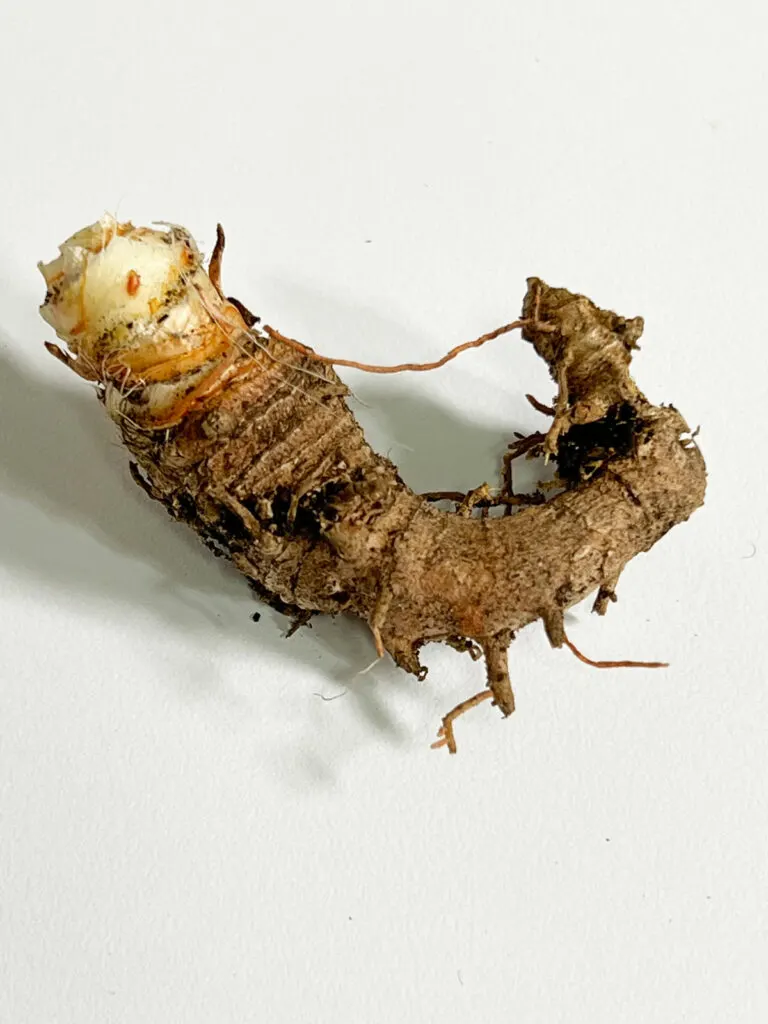
This time, I chose to use the sphagnum moss method that I just described.
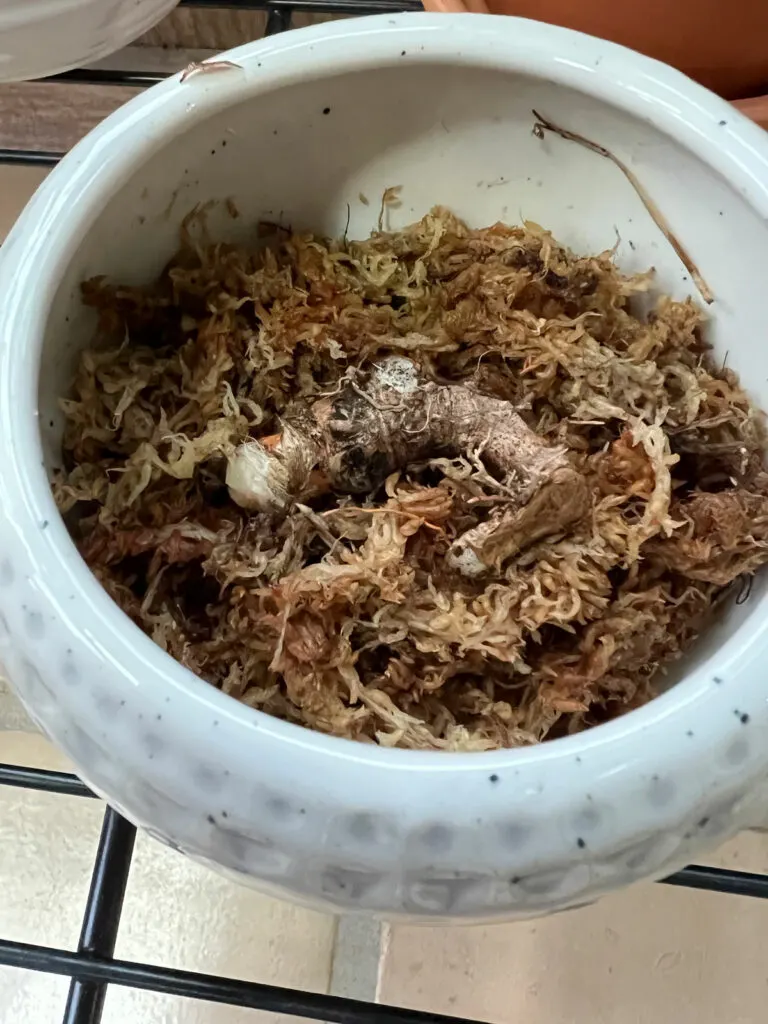
PROS:
This method is faster than propagating by leaf cuttings.
Just like propagating by crown division (method #1 in this post), rhizome cuttings will virtually always result in plants that are exactly like the parent plant, including variegated snake plants.
CONS:
In most cases, you’ll need to take your plant out of its pot in order to make rhizome cuttings.
5. Seed
You can also propagate snake plants from seed, but it’s simply not practical, especially on a commercial scale. Plants can be propagated much more quickly by division and by cuttings.
Did you know that snake plants produce flowers? The flowers are fragrant at night and are pollinated by moths, but unfortunately pollination and fruiting are fairly erratic.
I’ve never tried this myself, but next time any of my snake plants bloom, I will try to pollinate them and see if I can get any to produce seeds.
The downside with seeds is that you never know what you will get with the resulting seedlings, but this is also sometimes part of the fun!
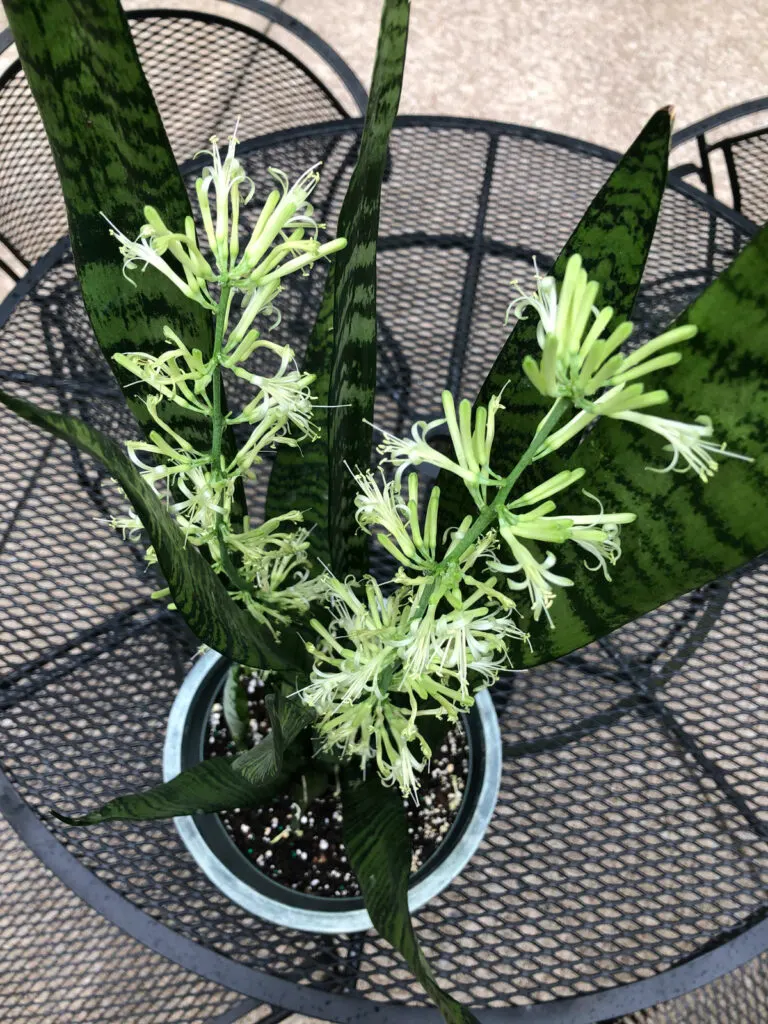
According to The Sansevieria Book by Hermine Stover, the seeds are hard and slightly transparent (like tapioca after it is soaked), and germination is extremely slow, potentially taking many months depending on conditions.
Using a propagation heating mat will definitely speed up the process. It would also be wise to sow your seeds and place them in a humidity chamber of some sort so that your media stays moist for proper germination.
RELATED SNAKE PLANT CONTENT
Here are some other posts that I wrote that you may enjoy:
Propagating Snake Plants in Water
Propagating Snake Plants in Soil
Growing Snake Plants Permanently in Water
Beautiful Snake Plant Varieties to Grow
Snake Plant Problems With Solutions
So there you have it! Which sansevieria propagation methods have you tried? Comment below. I’d love to hear!

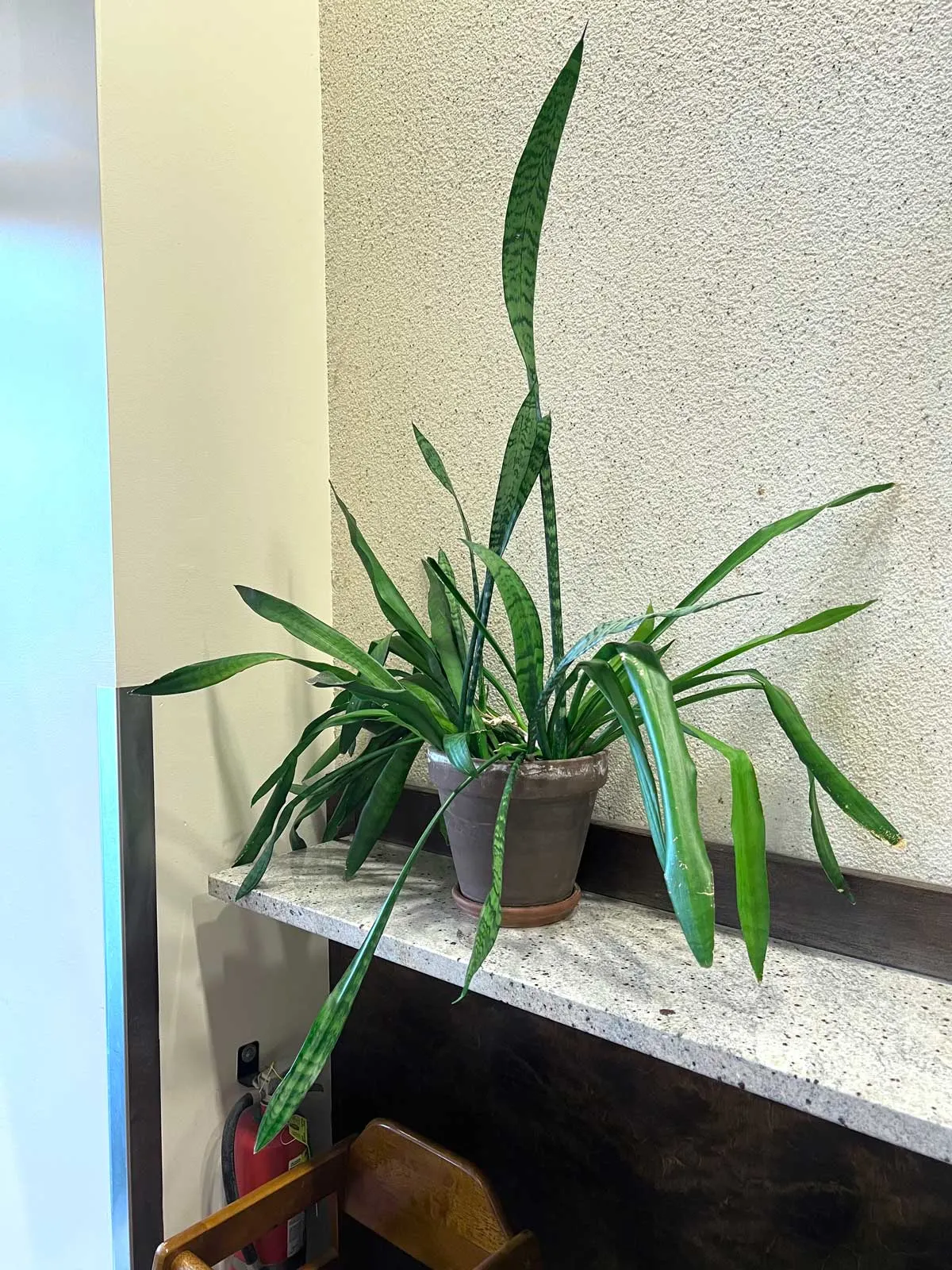
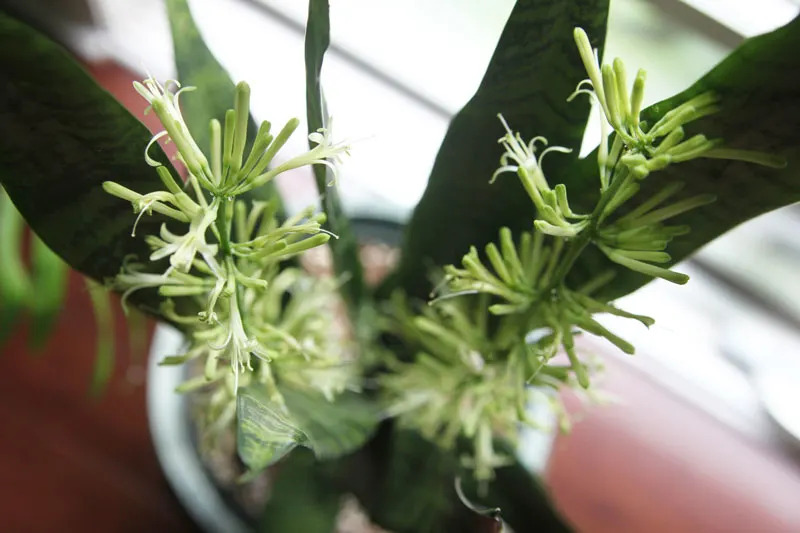
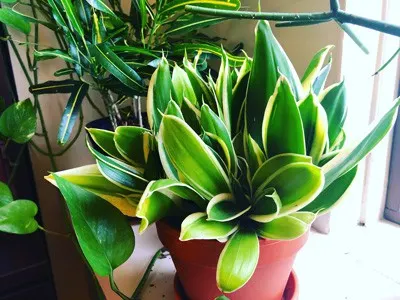
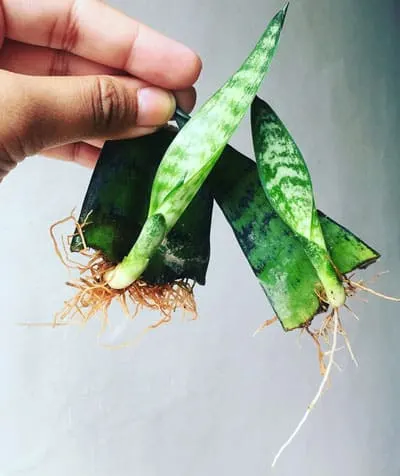
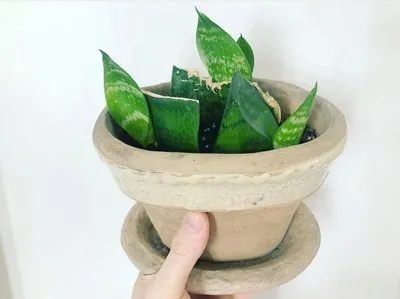
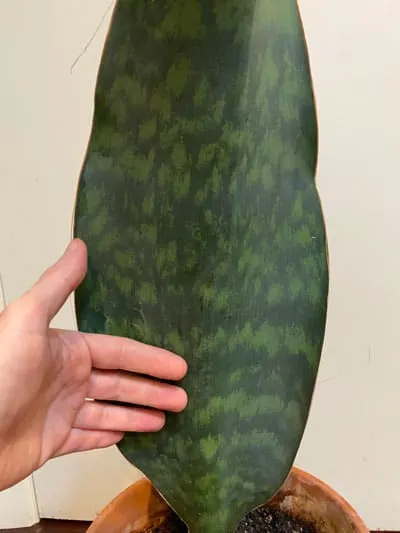
JulieR
Monday 12th of May 2025
Love your blogs, so informative. You give me hope that I can succeed with my plants. Thank you
Raffaele Di Lallo
Tuesday 13th of May 2025
You're very welcome Julie!
Joyce Fowler
Friday 17th of December 2021
Wow, thank you for all this wonderful information. I plan to try this soon.
Raffaele
Saturday 18th of December 2021
You're very welcome Joyce!